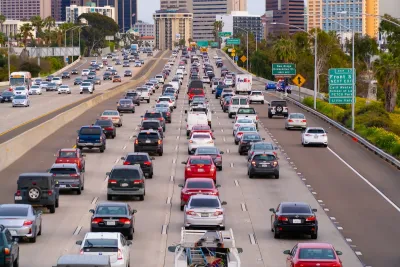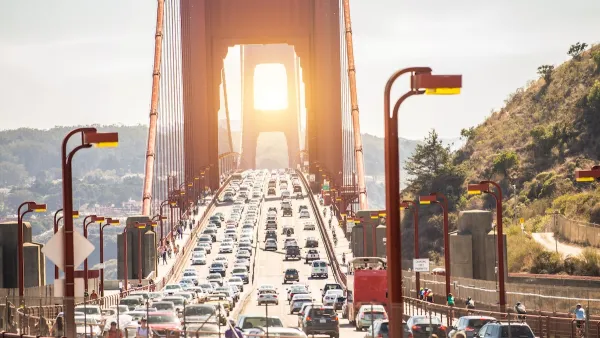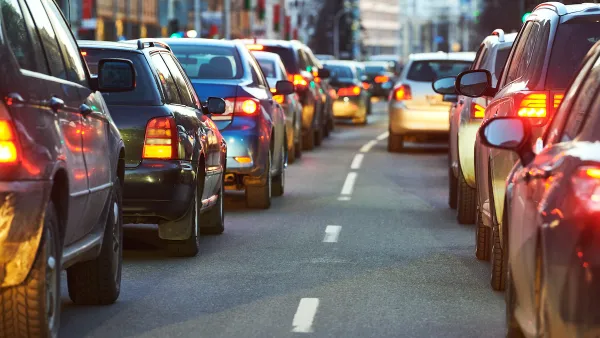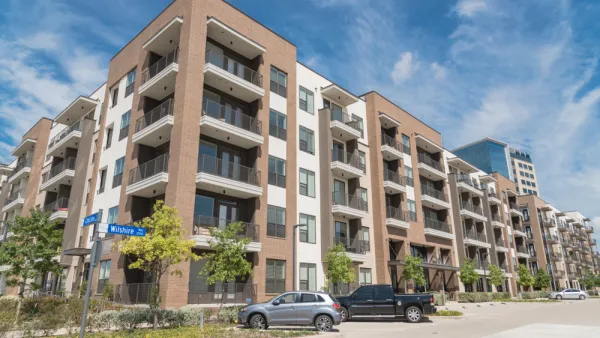The argument that car-centric development is good because it boosts national GDP ignores the massive costs of driving to everyday Americans.

In an opinion piece in Streetsblog USA, Andy Boenau argues that the link between more driving and higher GDP isn’t necessarily a good thing.
According to Boenau, the argument that GDP rises with VMT is “used in lazy attempts to prove road expansions for motor vehicles are necessarily good while traffic calming, road diets, bike lanes, transit lanes, etc. are bad. I do think the VMT/GDP overlay is an interesting talking point, but not in the way it’s generally spun by my fellow keyboard warriors.”
Boenau acknowledges that cars have greatly expanded our reach and opened up access to jobs and economic opportunities. In fact, if you take a simplistic perspective, sprawl is ‘good’ for GDP because it drives spending on roads, cars, fuel, and other related expenses. “VMT rises out of necessity, not as a marker of genuine growth or wealth.”
However, “GDP doesn't tell the dirty details of the car-dependent lifestyle most of America is burdened with.”
You might look at our soaring VMT trend as a reflection of disastrous land use and housing regulations rather than a direct sign of progress.
Boenau points to the high cost of car crashes for the U.S. healthcare system. According to the National Highway Traffic Safety Administration (NHTSA), motor vehicle crashes cost Americans roughly $340 billion in 2019 — costs that count as part of our GDP but are by no measure a positive thing for Americans. Beyond VMT and GDP, Boenau urges the reader to “Look at sedentary lifestyles, physical activity, heart disease, obesity, chronic illness, depression, anxiety. Look at the costs of each family having to be a fleet operator.”
FULL STORY: Opinion: Yes, the GDP Rises When We Drive More. But That Isn’t A Good Thing.

Analysis: Cybertruck Fatality Rate Far Exceeds That of Ford Pinto
The Tesla Cybertruck was recalled seven times last year.

National Parks Layoffs Will Cause Communities to Lose Billions
Thousands of essential park workers were laid off this week, just before the busy spring break season.

Retro-silient?: America’s First “Eco-burb,” The Woodlands Turns 50
A master-planned community north of Houston offers lessons on green infrastructure and resilient design, but falls short of its founder’s lofty affordability and walkability goals.

Test News Post 1
This is a summary

Analysis: Cybertruck Fatality Rate Far Exceeds That of Ford Pinto
The Tesla Cybertruck was recalled seven times last year.

Test News Headline 46
Test for the image on the front page.
Urban Design for Planners 1: Software Tools
This six-course series explores essential urban design concepts using open source software and equips planners with the tools they need to participate fully in the urban design process.
Planning for Universal Design
Learn the tools for implementing Universal Design in planning regulations.
EMC Planning Group, Inc.
Planetizen
Planetizen
Mpact (formerly Rail~Volution)
Great Falls Development Authority, Inc.
HUDs Office of Policy Development and Research
NYU Wagner Graduate School of Public Service




























